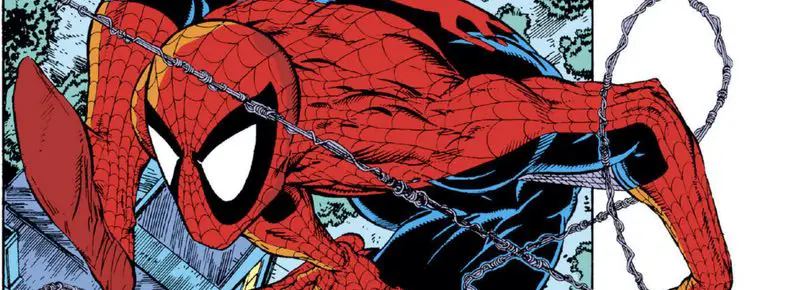Welcome to The McSpidey Chronicles: FAQ and Resources
In 2014, during the CBR era of Pipeline Comics, I reviewed every Todd McFarlane-drawn issue of “The Amazing Spider-Man.”
It took me nine months to get through them all.
I always thought there was more to do, though. So I’m bringing them all back, reformatting them, adding a lot more information and opinions, and giving them all an easy home to find on the World Wide Web here at PipelineComics.com/mcspidey.
This time, there’s even a prelude, where I cover the two issues before McFarlane’s celebrated run to give you a better idea of how big a jump in art styles it was to go from Alex Saviuk to Todd McFarlane.
You’ll also find a separate article reviewing the Omnibus collecting the whole series, an article with the different ways you can collect all the issues digitally, a Field Guide to Finding Felix the Cat (coming eventually), and a whole lot more.
This subsite started as an archive of reviews, but now it’s more. It’s also a resource for all fans of Todd McFarlane’s “The Amazing Spider-Man” work.

It also serves to launch “Pipeline Classics.” This is the place where I can cover classic or notable runs of North American comics from the past thirty years, with issue-by-issue recaps and more. I’m starting with “The Amazing Spider-Man” now, but I have lots of ideas for series to cover in the future. Keep reading!
Frequently Asked Questions
When did Todd McFarlane draw “The Amazing Spider-Man”?
How many issues of “The Amazing Spider-Man” did Todd McFarlane draw?
Did Todd McFarlane create Venom?
It was the subject of a recent flare-up of industry crosstalk once again, with the latest movie’s release.
My general opinion is that everything is, indeed, a remix. David Michelinie is the primary creator, with Todd McFarlane as the co-creator.
I talk about this more in my review of “The Amazing Spider-Man” #300.
When did Todd McFarlane leave Marvel?
After drawing 15 of the first 16 issues, he left Marvel and formed Image Comics in 1991 with Jim Lee, Rob Liefeld, Erik Larsen, Jim Valentino, Whilce Portacio, and Marc Silvestri.
“Spawn” #1 debuted in May 1992, and recently crossed the 300th issue mark.
How much is Todd McFarlane’s “The Amazing Spider-Man” worth?
That’s the outlier, though. The rest of the run comes in at under $100 to a few hundred per issue. Those prices are all for CGC graded mint versions. Ungraded or less-than-mint versions will go for much lower prices than that.
Reprints are widely available in trade paperback, hardcover, and digital form.
Why did Todd McFarlane leave Marvel Comics?
Image Comics didn’t come right away. McFarlane attempted a hockey trading card venture first, as outlined in Rob Liefeld’s “Robservations” podcast.
Eventually, the lure of forming a new, independent, and creator-owned comics company brought him back to the drawing board for comics. He could draw a comic featuring his childhood creation, own it completely, and profit from all of its uses.
How much is Todd McFarlane’s original art worth?
The original art from the cover to “The Amazing Spider-Man” #328 set a sales record when it sold for $657,250.
If you’re thinking of buying a page of his art, think about paying off your mortgage, instead.
Who coined the term “Spaghetti Webbing”?
Tom De Falco wasn’t a fan of the webbing when I started drawing it the way I did, and, in a moment of frustration, called it “spaghetti webbing.” He actually told me to stop drawing it that way, but, in my head, I thought, “I have a name for it now!”
The term has stuck ever since. Keep an eye out for an article detailing the term, the history, and the use of spaghetti webbing in the near future.
Resources and Tools
Mike’s Amazing World of Comics is an amazing resource for finding cover dates and release dates of every comic you can remember through the decades.
ComicArtFans.com is a wonderful and invaluable resource for those in the original art collecting hobby. The kind of pages I’m looking at there for this series are way out of my price league, but you can see parts of my collection there, too.
Affinity Designer is a great vector-based tool for putting together graphics for websites. It’s the much cheaper version of Adobe Illustrator.
Acorn is the photo editing program I use the most for simple resizing and cropping images. (Its creator is a fellow August, to boot!)
There’s also a large number of magazine interviews from the time period that I’ve been rereading for this project. I’ll do a separate post about some of those another time. It includes such beloved magazines as “Amazing Heroes”, “Comics Interview”, “Comics Scene”, and “The Comics Journal.” It also includes “Wizard”.
Other sources will be cited and linked to along the way.


2 Comments